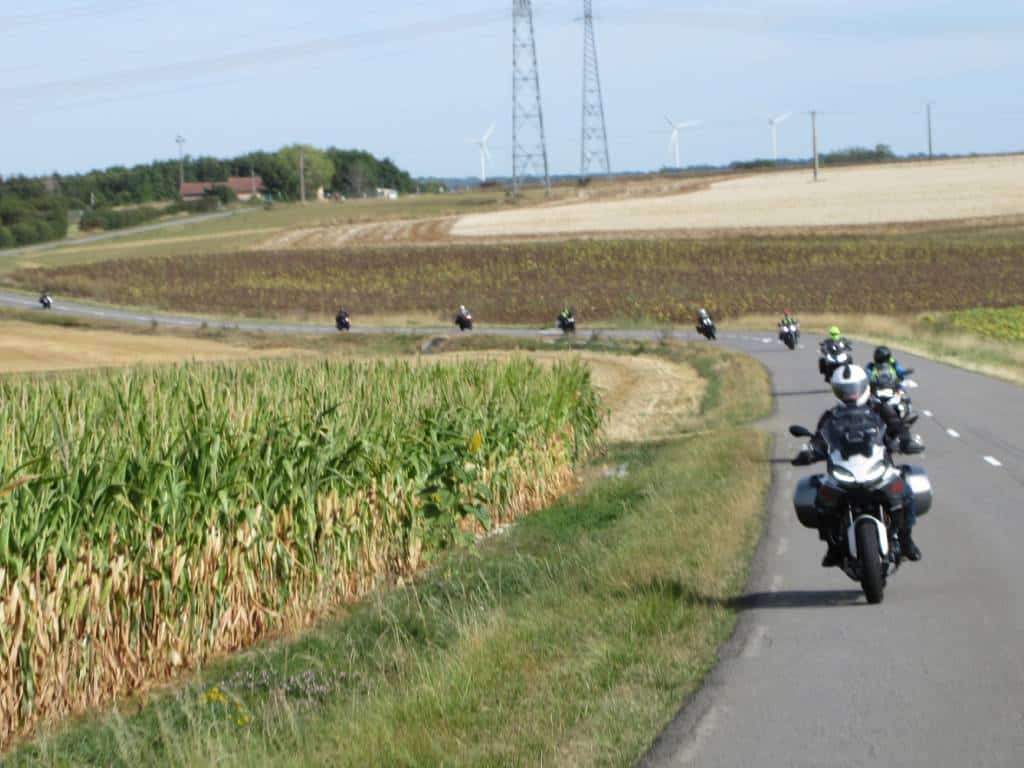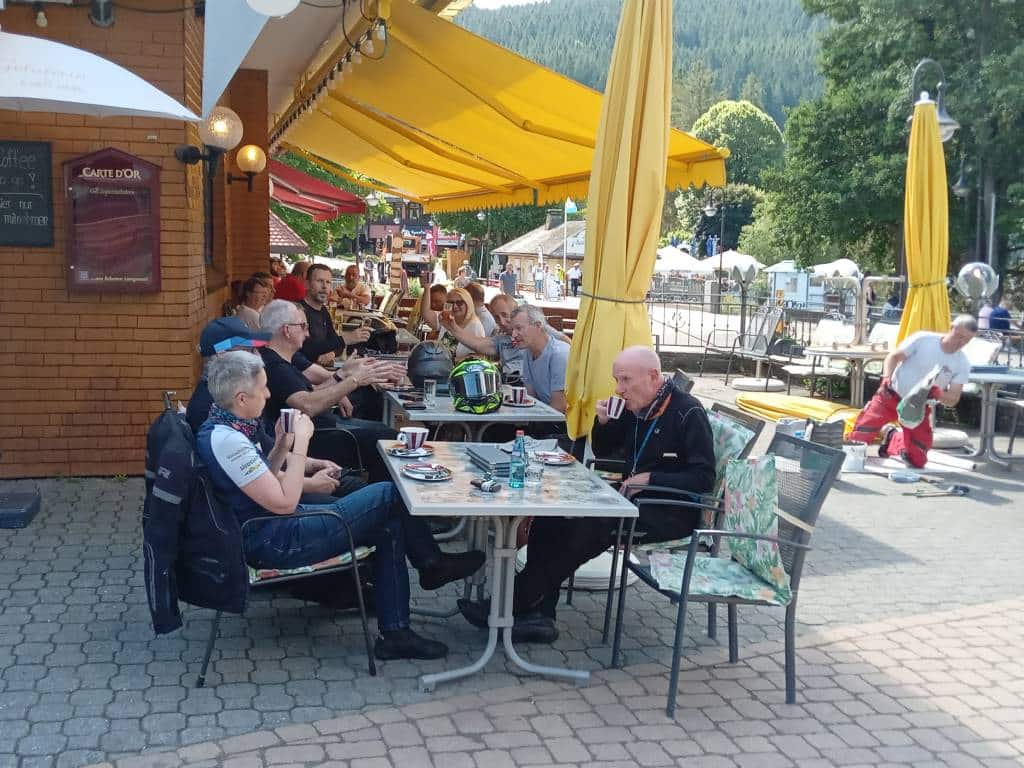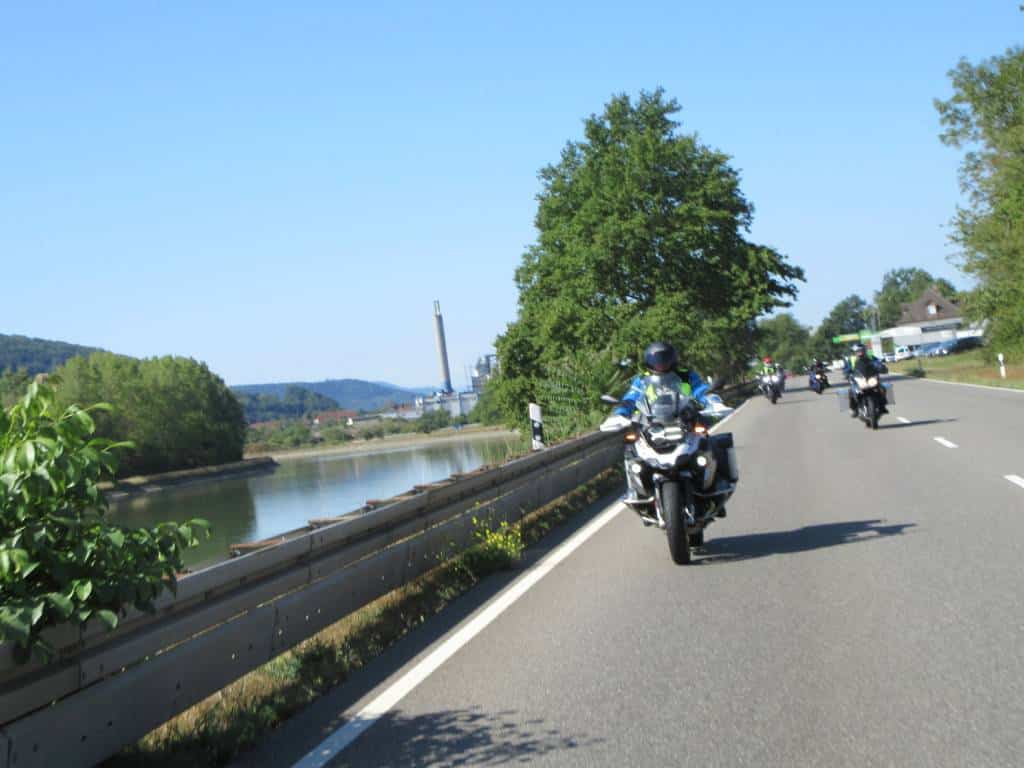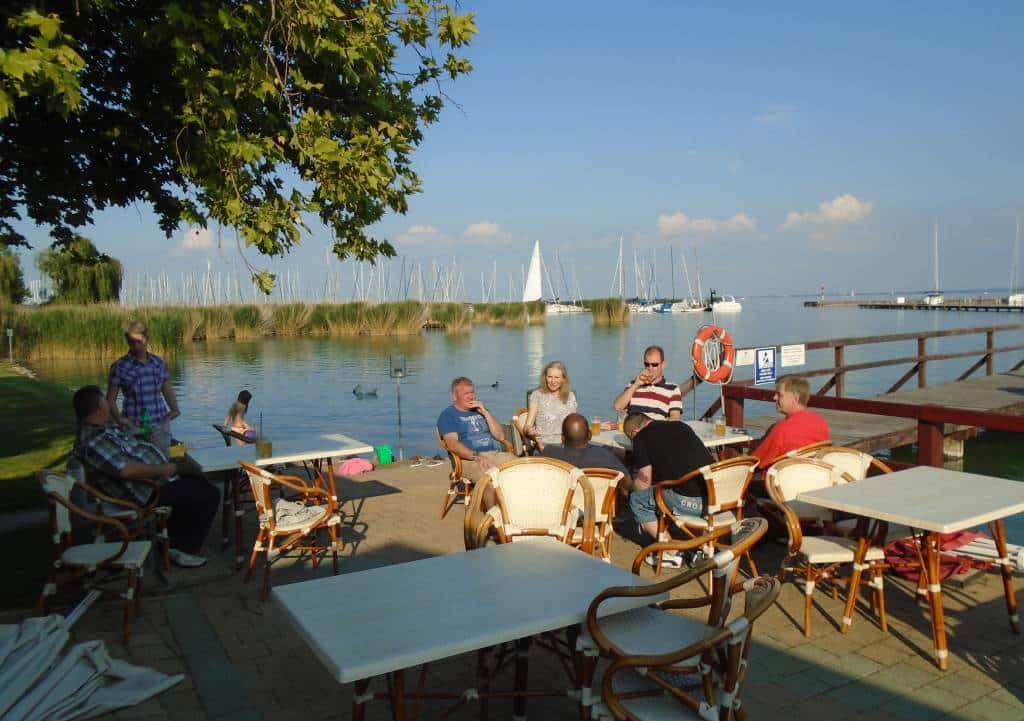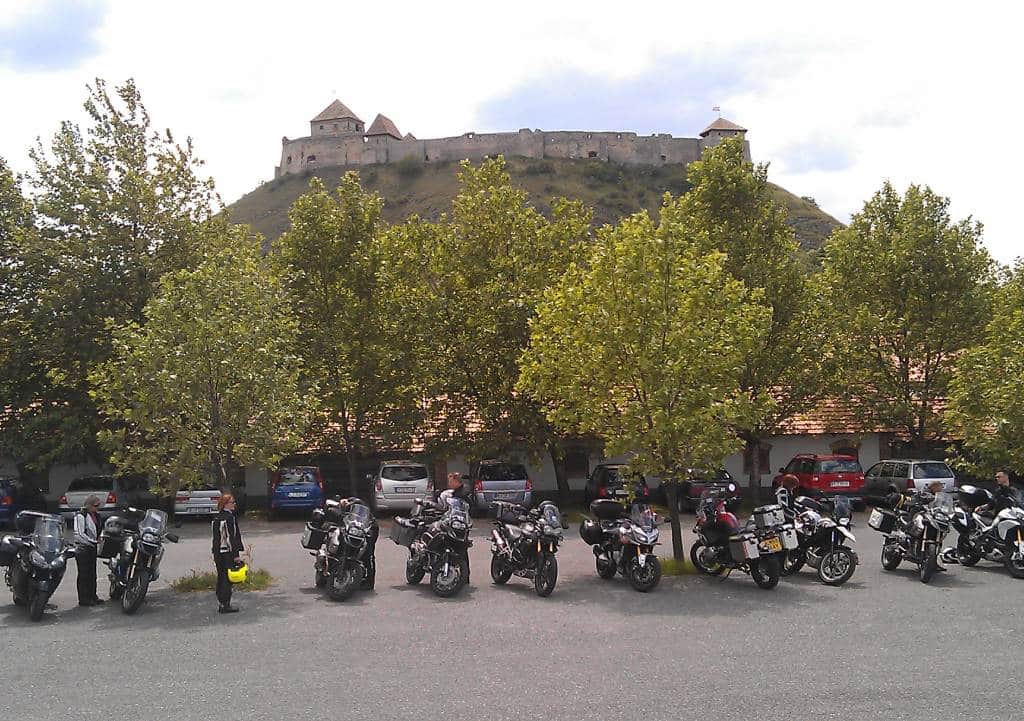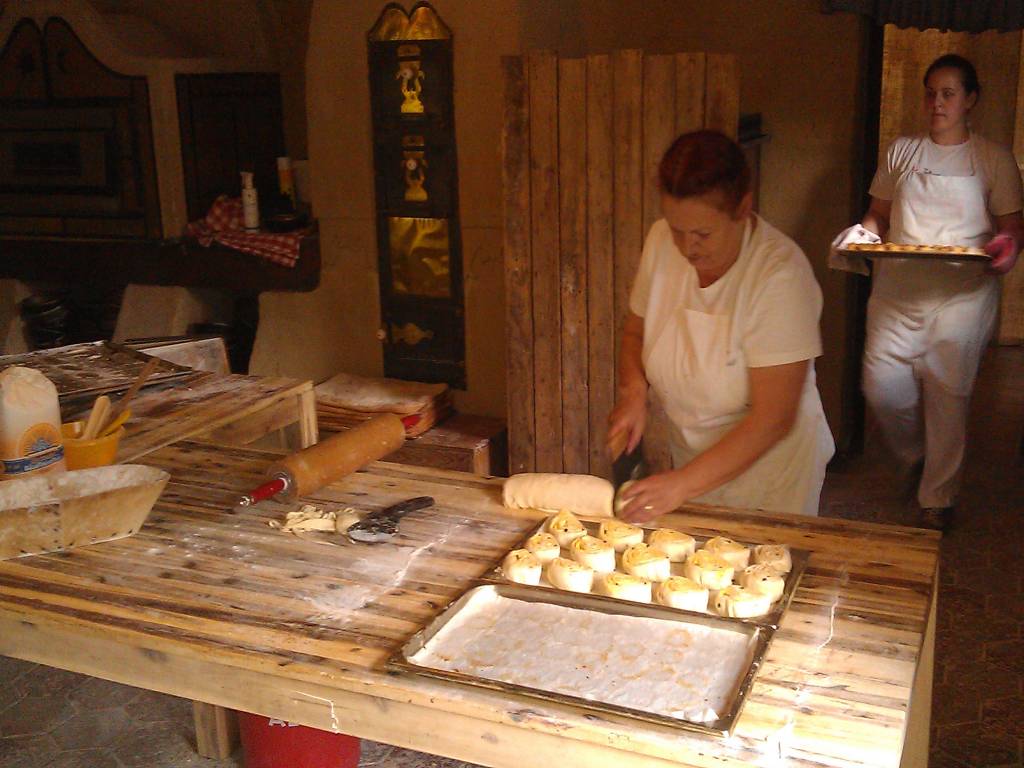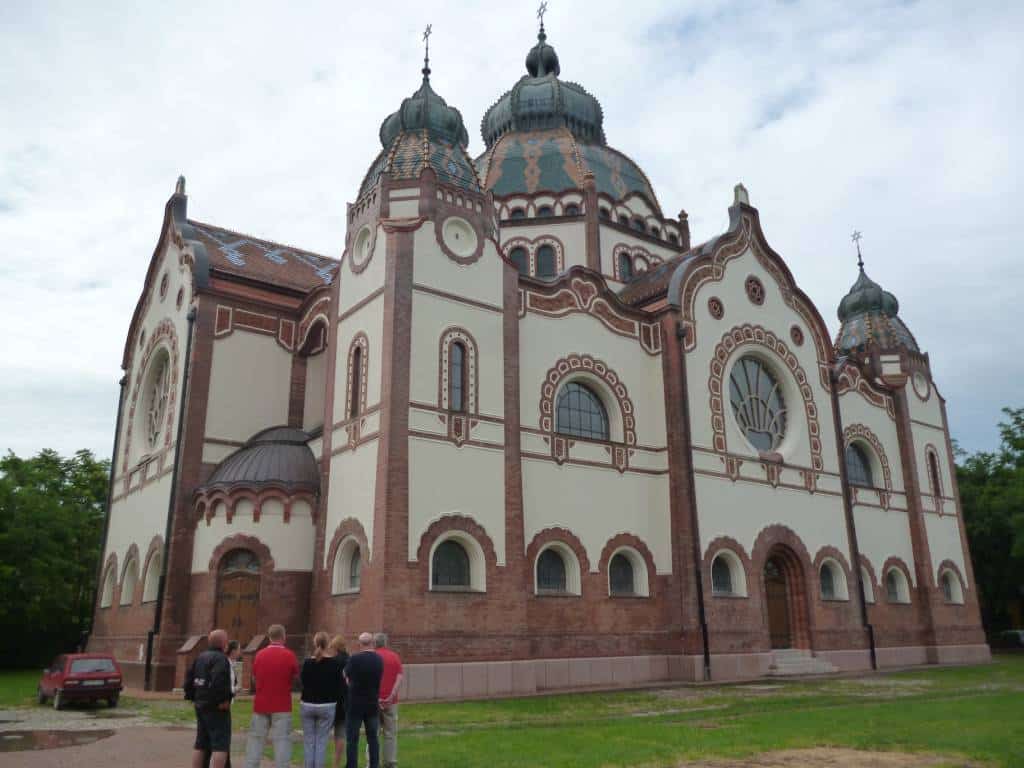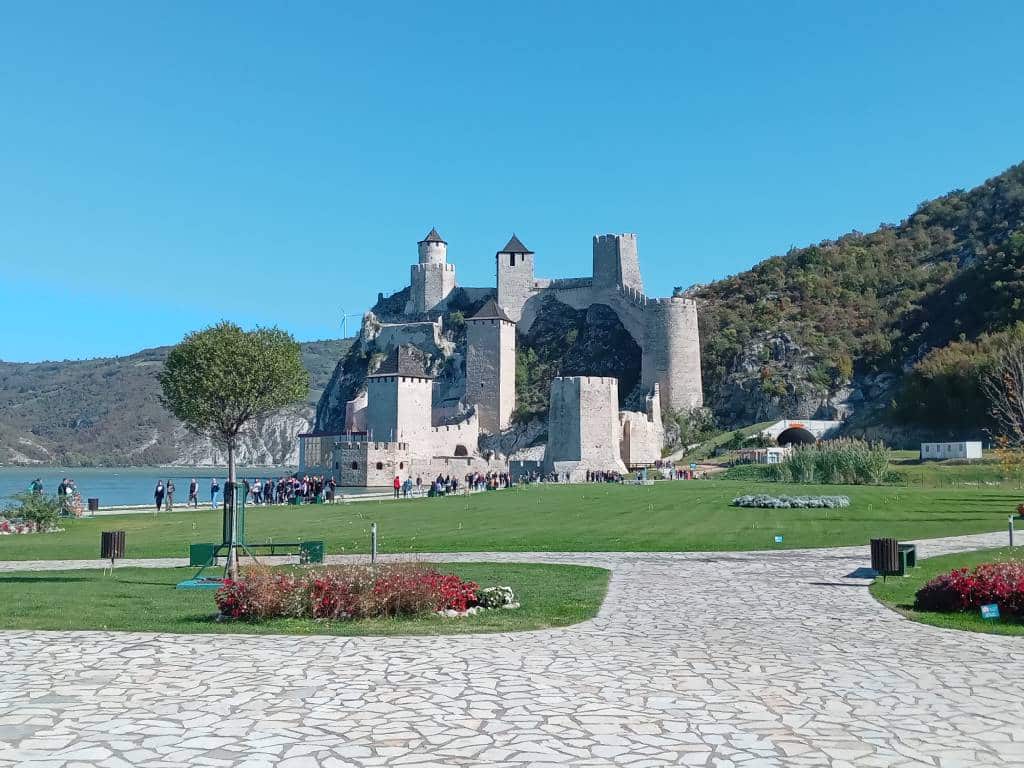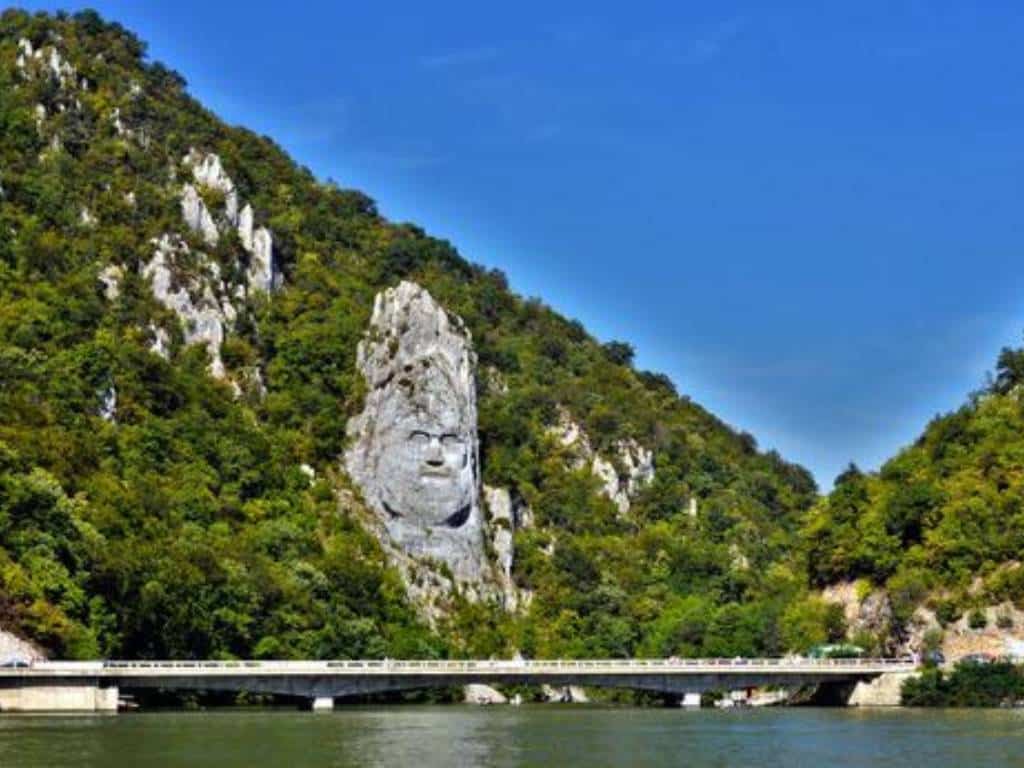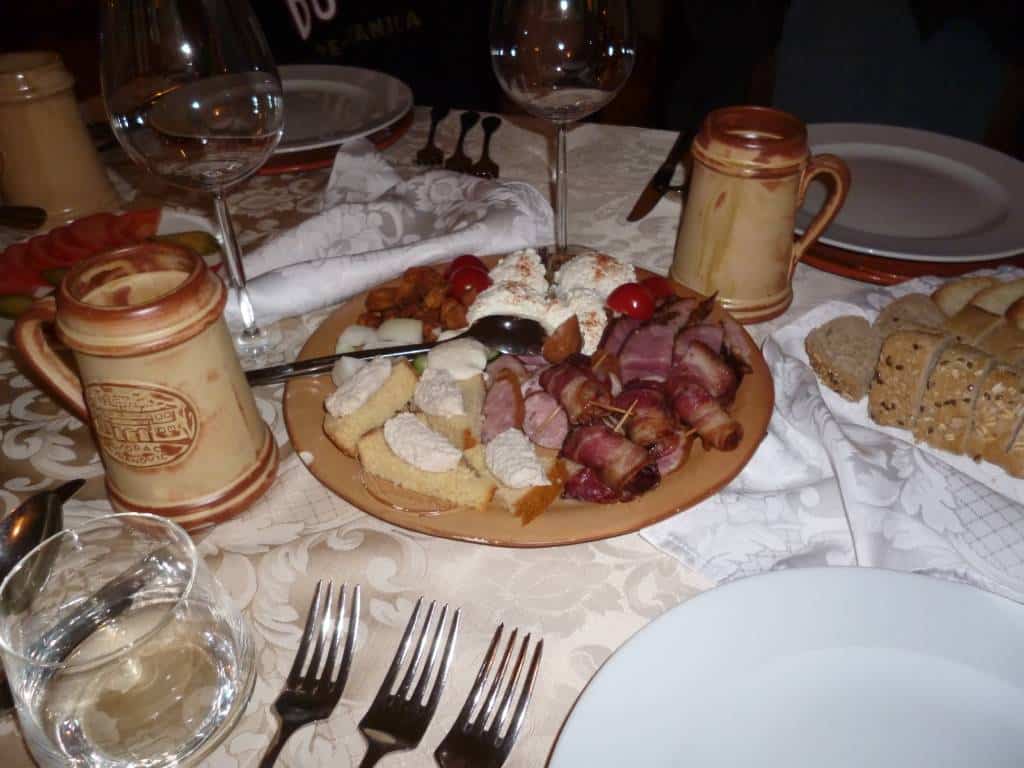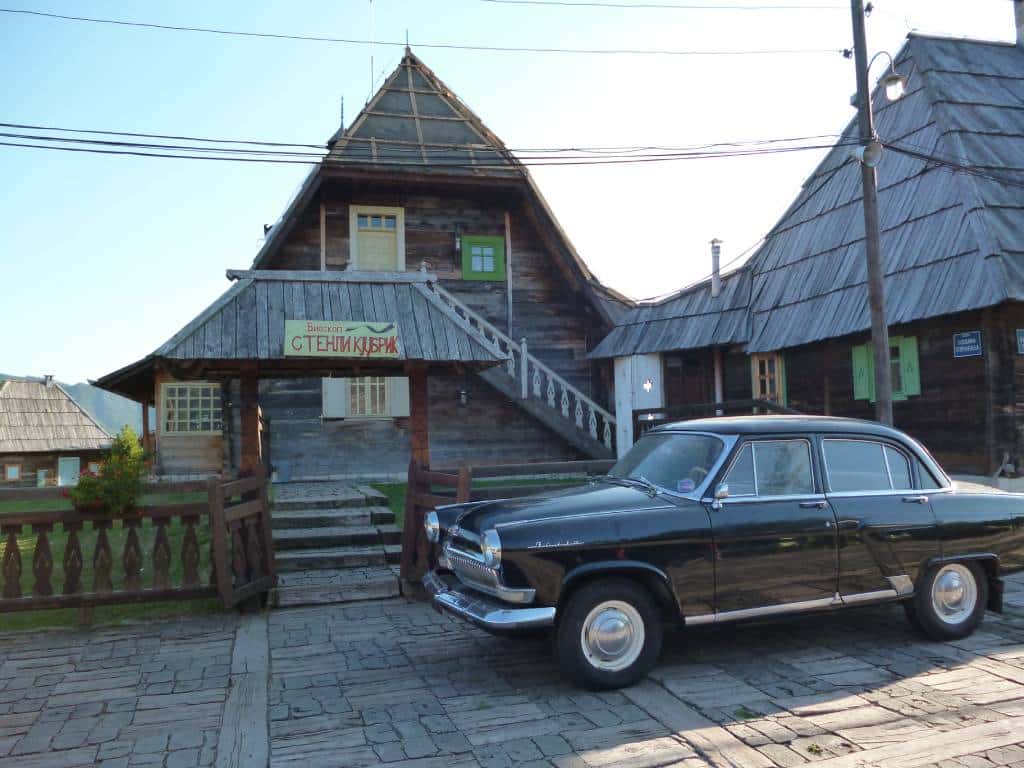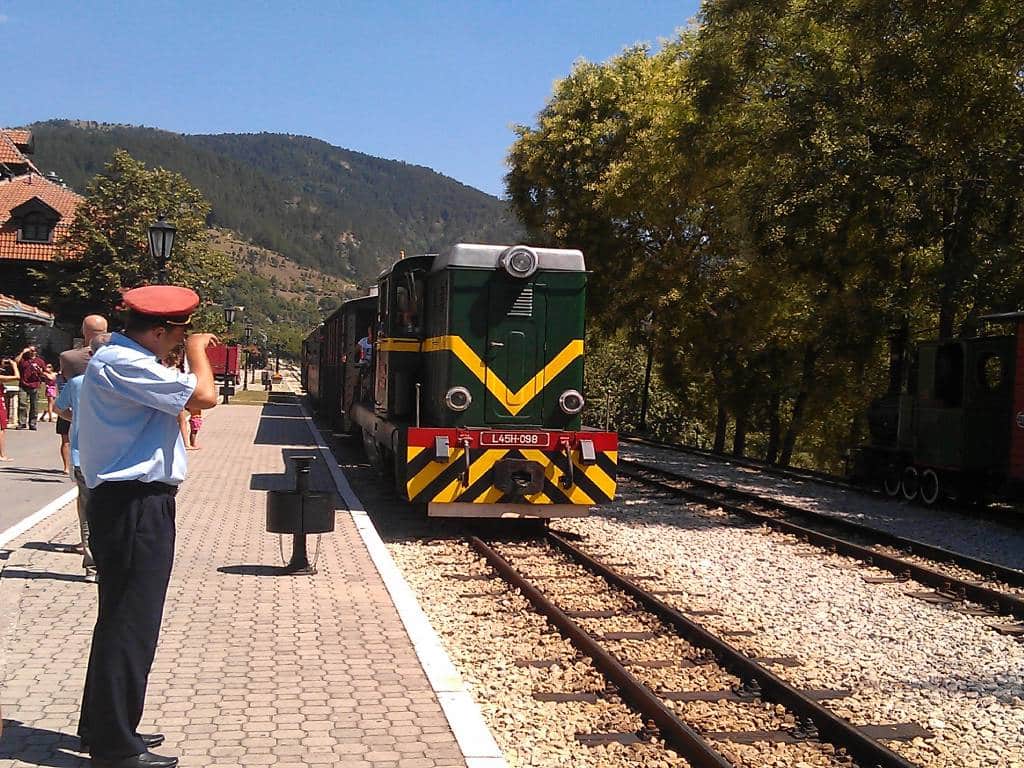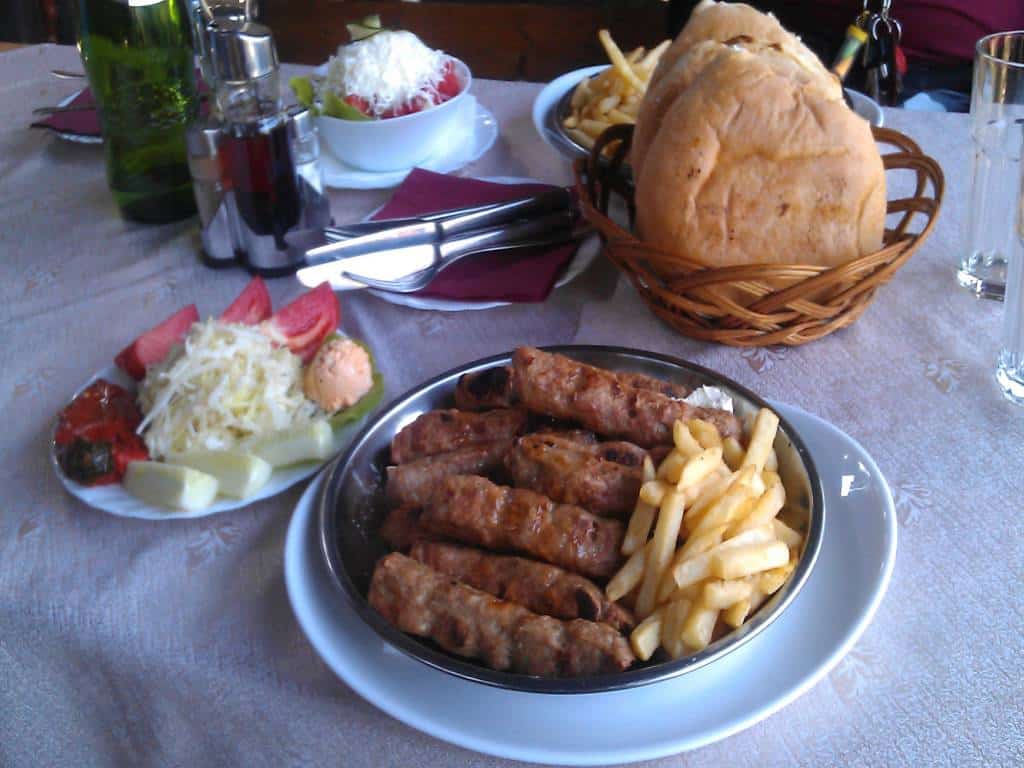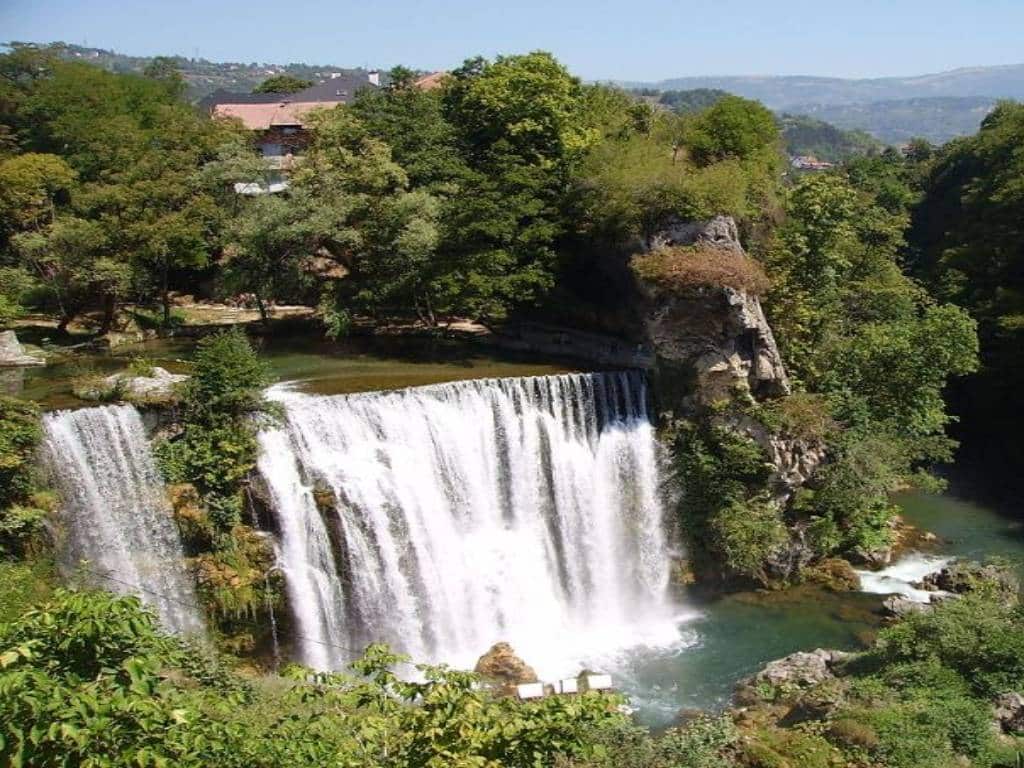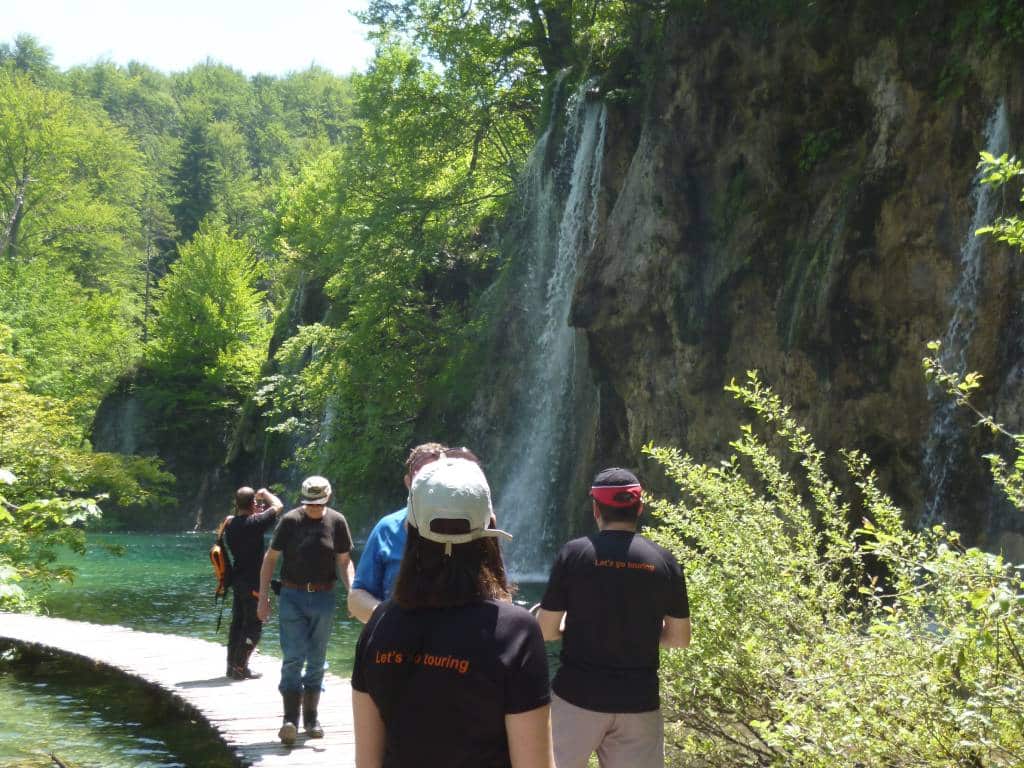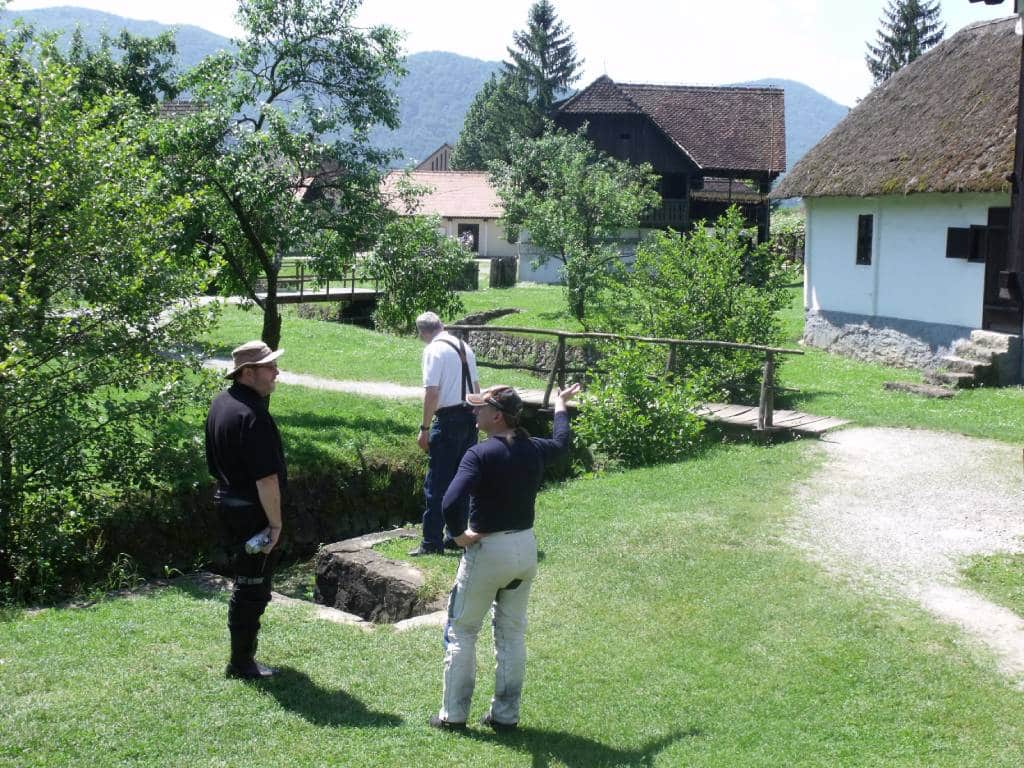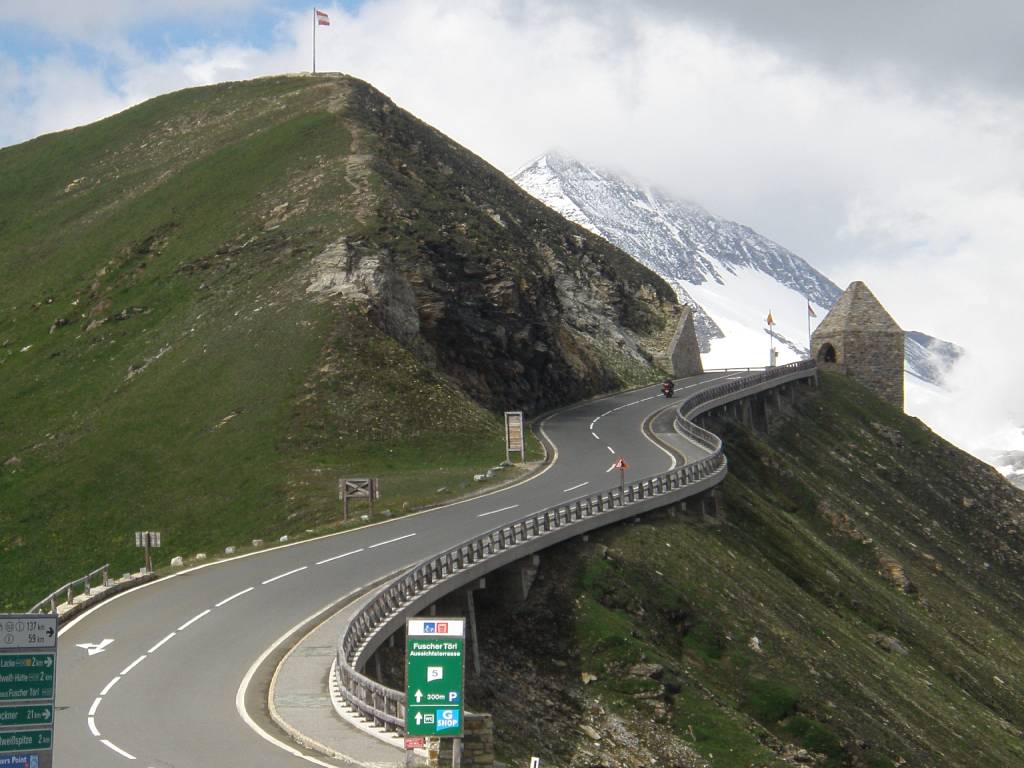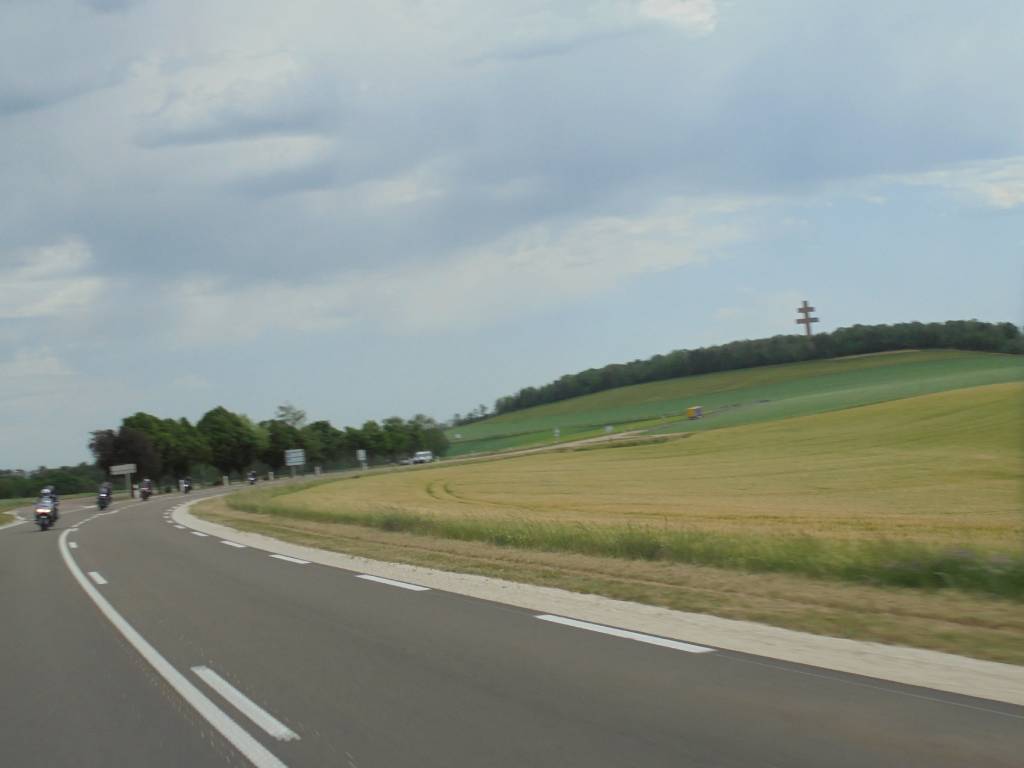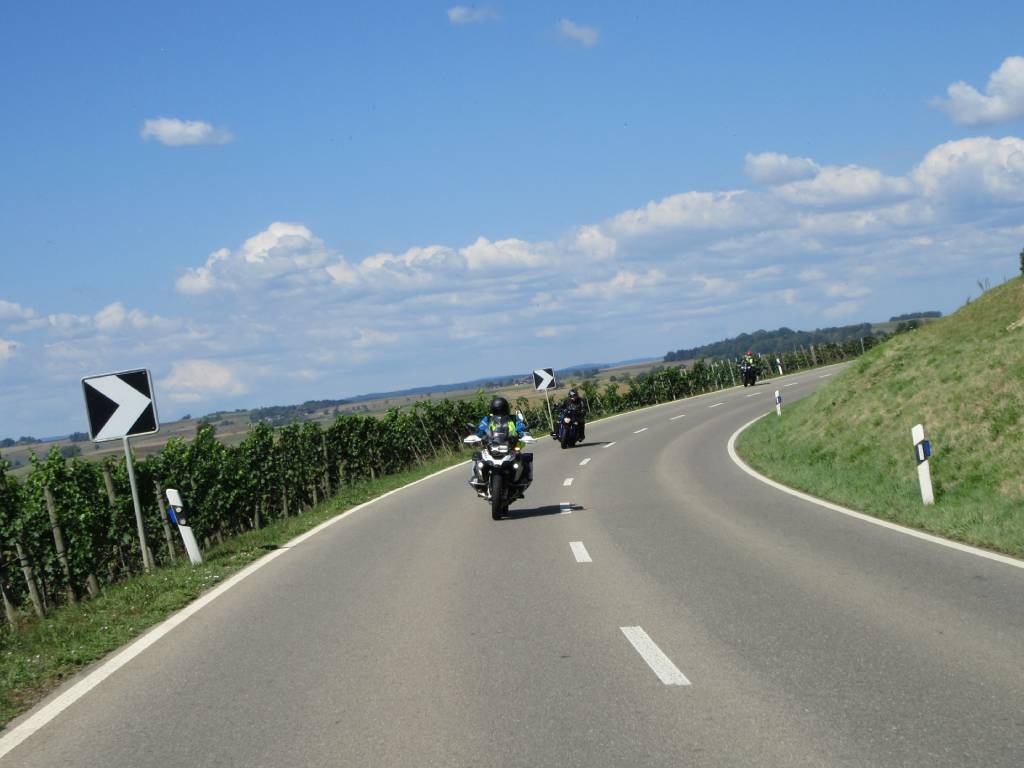Let's go touring…
Hungary, Serbia, Bosnia and Hercegovina and Croatia guided motorcycle holiday
Hungary, Serbia, Bosnia and Croatia guided motorcycle holiday. A memorable motorcycle journey from the White Cliffs of Dover to the heart of Eastern Europe... and back.
This fantastic Hungary, Serbia, Bosnia & Herzegovina and Croatia guided motorcycle holiday is a melting pot in many different ways.
Historically it’ll take us on a journey of the Empires. We’ll time-travel from the Roman to Tatar & Mongolian, Byzantine to Ottoman and Prussian to Austro-Hungarian. Gastronomically this tour is a steaming cauldron of Slavonic, Germanic, Italian and Turkish fusion cuisines cooked on a slow fire over centuries. And socially, we’ll experience a warm welcome characteristic to the Balkans.
But most importantly, when it comes to riding, the Hungary, Serbia, Bosnia & Herzegovina and Croatia guided motorcycle holiday is a true melting pot of scenic biking routes, exhilarating mountain passes and nearly traffic-free country roads. We’ll travel through central Europe, cross the Alps, traverse Pannonian Plains, follow Danube Gorge and meander across the rugged plateaus of Bosnia & Herzegovina.
The Hungary, Serbia, Bosnia & Herzegovina and Croatia guided motorcycle tour begins with a cocktail transit ride of motorways and winding scenic roads across Luxembourg, Germany and Austria.
Hungary is our first destination in Eastern Europe proper. From our base hotel on the shores of Lake Balaton, we’ll experience Hungary’s rich Tatar, Mongol and Austro-Hungarian heritage, culture and cuisine. The theme of this part of the tour is Tokaji wine, paprikash, goulash, Cigany grill (gipsy grill) and freshly baked bread. And, of course, riding along the quiet, traffic-free country roads through the eye-pleasing landscapes enveloped by the fragrant summer scents of the endless Pannonian pustas.
“Hungary is a land where the people are welcoming, the food is religion, and the language is unpronounceable”.
Crossing into Serbia and sharing our time between four still unexplored destinations, we’ll experience a real melting pot of cultures, religions and empires. From the historical point of view, we’ll leave Atila the Hun and Genghis Khan behind and enter the domains of Austro-Hungarians, Romans, Byzantines, Turks, Slavs and perhaps lesser-known but culturally equally influential Vlahs. From the gastronomical point of view, we’ll enter the realm of sarma, gibanica and pljeskavica (please google each dish to be prepared when presented with menus).
“Serbia is a land where the family is everything in life, good food means a good life, and a handshake is the way of life”.
Next, we continue to Bosnia and Herzegovina. Throughout its history, many things have divided the Balkan countries. However, there is something that firmly unites them. All Balkan states have a great passion for coffee, dating back to Ottoman times. Turkish – unfiltered – coffee is drunk, savoured, consumed, and sipped throughout Croatia, Serbia and Hungary. However, in Bosnia and Herzegovina, not drinking coffee is practically against their faith. Therefore, stopping for a cezve or two of coffee, a bite or two of baklava, a nibble or two of ratluk (Turkish delight), and a people-watch as often as possible is practically mandatory during this stage of this fascinating tour.
“Bosnia and Herzegovina is the land where the West meets the East. It is the land where an inquisitive personality is preferable, a healthy appetite is desirable, and a good sense of humour is mandatory”.
Croatian Zagorje, or as Croatians call it, Hrvatsko Zagorje (behind the hills), is our final destination in Eastern Europe. During Roman times, they named it Vallis Aurea (golden valley). And for a good reason too. Today, this history-rich, tradition-steeped, gastronomically-vibrant region of perfect-almost-traffic-free-roads has earned a bit of a secret motorcycle touring hotspot reputation.
“Croatia is the land where the true beauty comes from people, football is up there with the Pope, and the first few words you’ll learn are ‘Jedi!, Jedi!, Jedi!’ (Eat!, Eat!, Eat!)”.
Hungary, Serbia, Bosnia & Herzegovina and Croatia guided motorcycle tour is a big tour with a big heart that never stops giving. Therefore, please spend some time reading the day-by-day itinerary. It’ll give you more details about the destinations and help you understand the vastness of this journey.
PLEASE NOTE: On rare occasions, the itinerary might slightly change depending on hotel availability.
For an alternative to Hungary, Serbia, Bosnia & Herzegovina and Croatia guided motorcycle holiday; please use this link: Bosnia, Croatia and Slovenia self-guided motorcycle tour.
Please visit our Facebook page for up-to-date information regarding Hungary, Serbia, Bosnia & Herzegovina and Croatia guided motorcycle holiday.
Tour highlights:
- 3*** and 4**** biker friendly hotels
- Lake Balaton - Hungary
- Sümeg Castle - Hungary
- Roman Spa Town of Hévíz Hungary
- Medieval Open Air Museum at Bikal -Hungary
- Austro-Hungarian town of Subotica - Serbia
- Đerdap National Park - Serbia
- Golubac Fortress - Serbia
- Djerdap Klisura (canyon) boat trip - Serbia
- Ottoman Fort in Niš - Serbia
- Drvengrad Ethno Village (Wooden town) - Serbia
- Šargan eight narrow-gauge railway trip - Serbia
- Historic town of Jajce - Bosnia & Hercegovina
- Pliva waterfall - Bosnia & Hercegovina
- Plitvice National Park - Croatia
- Kumrovec, birthplace of Marshall Tito - Croatia
- Plöckenpass - Italy / Austria
- Großglockner pass - Austria
When we go:
Countries:
Motorcycle rental:
Day by day tour itinerary
Welcome to the start of Hungary, Serbia, Bosnia & Herzegovina and Croatia guided motorcycle tour.
A morning channel tunnel crossing will take us under the water to Calais. From there, we’ll be heading towards Belgium. The first half of the route will be on the motorways giving us more time to ride the beautiful country roads in the afternoon. A great thing about riding through the Belgian Ardennes is we’ll never be short of breathtaking views.
The riverside town of Givet is an excellent place to stop for lunch and refreshments and take some nice holiday photos. The town has a lovely square with several cafés and restaurants offering a great selection of traditional specialities.
From Givet, we’ll continue our pleasant ride through the scenic countryside of Belgian and Luxembourg towards our hotel in the Luxembourg City region.
Today our Hungary, Serbia, Bosnia & Herzegovina and Croatia guided motorcycle tour heads towards Germany.
It is a transit day and a long-ish day in the saddle, so to make quicker progress and avoid some big towns like Mainz and Würzburg, we’ll mainly use motorways. However, we’ll ensure there is time for frequent stops for fuel, snacks, refreshments, lunch, and a bit of friendly banter (or, as we would say it in proper English p… t…..).
Our hotel in the Nuremberg region will welcome us with comfortable rooms and a well-deserved afternoon drink.
The third day of our Hungary, Serbia, Bosnia & Herzegovina and Croatia guided motorcycle tour gives us plenty of choice regarding the routes.
Our route doesn’t have to include any motorways at all. However, to make quicker progress and avoid some big towns like Regensburg and Passau, we’ll have motorway options available if we choose to use them.
After Passau, we can join the road that perfectly contours the shape of the river Danube for a little while. Which is not the straightest of the routes, and navigation might be open to interpretation. But if we just let the river be our guide, it’ll get us to our next destination. There are many riverside restaurants, cafés and eateries along the route, so finding a place for refreshments and breaks is not a problem.
Today, the Hungary, Serbia, Bosnia & Herzegovina and Croatia guided motorcycle tour will take us to Eastern Europe proper. We’ll leave one half of the former Austro-Hungarian Empire after an early-ish Frühstück and arrive at the heart of the other half just in time for vacsora (evening meal in Hungarian). Within a day’s ride from the lush hills of Österreich (Austria), we’ll descend to the lush Pannonian plains of Magyarország (Hungary). So Auf Wiedersehen Österreich (goodbye Austria) and jó napot Magyarország (good day Hungary).
Today’s suggested route includes meandering along scenic country routes, ancient Roman roads, old Mongol byways, and nostalgic maple tree-lined Royal highways.
As we approach the Hungarian border, we’ll be entering the Pannonian plains – the sea of grass. From there on, in our rearview mirror in the distance, we’ll still see a glimpse of the Austrian hills. But the landscapes in front of us will become progressively flatter.
Regarding geography, the plains formed when the Pannonian Sea dried out. Our next destination, Lake Balaton, is all that remains from this once vast expanse of water. Historically, Hungary has been a melting pot of cultures. The Romans, Huns, Tatars, Mongols, Turks, Prussians, Austro-Hungarians and Russians shaped the countries’ rich history. They all left their unique marks on Hungarian tradition and culture for us to learn, explore and enjoy. Many historians say Atila the Hun’s final resting place is not far from Lake Balaton. Also, Gingis Kan’s Mongolian hordes frequently roamed these lands too.
What Hungary lacks in terms of iconic biking roads, it certainly makes up in terms of food and wine. Bull’s Blood (Bikavér), Borforrás, and Tokaji are just a few among many famous Hungarian wines. Hungarians are also renowned for their ‘Eat, Drink, Dance & Be Magyar’ party outlook on life. So don’t be surprised if, while in the middle of the day searching for somewhere to have our lunch, we come across a csárda (traditional Hungarian restaurant) with a Cigany (Gypsy) band playing at full blast. So if this happens, we’ll find a table in the shade, relax, order a big portion of Gypsy grill and enjoy the Gypsy virtuoso spectacle. The Gipsy grill accompanied by Gypsy music works so well that even the famous Austro-Hungarian composer Franz Liszt took inspiration from the native bohemians to compose some of his best masterpieces while perhaps snacking on the Cigany grill and sipping Hungarian wine.
Our hotel on the shores of Lake Balaton will welcome us with a comfortable room and a cold afternoon drink.
This is our first day off on Hungary, Serbia, Bosnia & Herzegovina, and Croatia guided motorcycle tour. So we can use it whichever way we fancy it. Visits to Sümeg Castle and the nearby lakeside town of Hévíz are popular options. But parking the bikes and doing a bit of nothing is always a popular option too.
Sümeg Castle is one of Hungary’s most beautiful and best-preserved medieval fortresses. The castle stands on a barren hilltop overlooking the eye-pleasing countryside. The castle is also home to the Medieval Equestrian Centre, where we can see medieval games, Knight Tournaments and feasts. A short walk or a taxi ride will take us inside the castle to see the ramparts, living quarters, dungeons, and medieval armour and weapons collection.
If we feel peckish, the Várcsárda (Castle restaurant) serves a great selection of traditional Hungarian dishes. Please try goulash, paprikash or mixed grill.
The nearby town of Hévíz is home to one of the largest thermal lakes in the world. It started as a Roman spa town and, throughout its history, developed into one of Hungary’s most popular tourist destinations. The town is lovely to walk about, have a drink and relax. There are many cafés and restaurants to choose from, and it is easy to park.
You can take a spin around the lake if you fancy a longer ride. It is pretty easy to combine the visits to Hévíz and Sümeg Castle. It is about 140 miles and can include as many stops at other lakeside towns as you wish. You’ll have a perfect opportunity to sample some of the best cakes ever. Look out for Cukrászda (cake cafés), coffee shops or any other eatery.
This is our recommended dessert menu of uniquely Hungarian calorie-dense cakes:
– Dobos torte: sponge cake sports layers of chocolate buttercream.
– Esterházy torte: Royal Cake – alternating layers of ground walnuts and rum-soaked buttercream.
– Krémes: custard slice similar to a Napoleon pastry.
– Flódni: rich cake layered with plum jam, apple, ground walnuts, and ground poppy seeds. It originates from Hungary’s Jewish community.
The theme of today’s journey on our Hungary, Serbia, Bosnia & Herzegovina, and Croatia guided motorcycle tour is ‘in the middle of nowhere’. First, we’ll depart from the serene Lake Balaton in Hungary, which is more or less on the fringe of the middle of nowhere. Then, we’ll spend most of the day riding across the panoramic Panonnian Puszta, which is definitely in the middle of the middle of nowhere. And finally, we’ll arrive at the charming Austro-Hungarian border town of Subotica in Serbia, which is leaning towards the far end of the middle of nowhere. But this ‘in the middle of nowhere aspect’ of the ride’ makes today’s journey unique. We’ll be able to see, smell, feel and taste the real Eastern Europe.
As we leave Lake Balaton behind and continue meandering through the panoramic countryside, we’ll pass through the sleepy town of Marcali. Your first impression is likely to be, ‘not much happens here. Keep riding’. But don’t be fooled by the first impression. Along our route through the town, several pékségek (bakeries) and cukrászda (cake shops) serve an array of mouth-watering goodies. So if we decide to stop and would be rude not to, you’ll soon realise plenty is going on here.
From Marcali, some quiet scenic-traffic-free back roads will guide us towards the middle of nowhere. And then, eventually, we’ll arrive at the village of Bikal and the Medieval Open Air Museum… even deeper in the middle of nowhere. The Old Town part of the museum, surrounded by a wall, four robust gates and several imposing watchtowers, is a special place where history comes to life. Here we’ll have a unique opportunity to relive some of the long-gone medieval traditions and customs. If the timing of our arrival works out well, we’ll be able to watch the knight tournament, where the knights in shining armour reenact historical events and battles. We’ll also see the workshops of medieval artisans demonstrating their medieval craft and art skills. And if we ask politely, a farrier might even allow us to test our own anvil and hammer skills and bang a couple of dents on a horseshoe. Or a cobbler might show us the medieval way of manding our bike boot next time the heel comes off. But by far, the best experience is the medieval bakery. Although we might not be allowed to part-take in baking, we’ll definitely be able to have a go at the assortment of delicious freshly baked medieval strudels, scones and cinnamon buns.
And just like that, before we even realise it, we’ll arrive at yet another border crossing, and our passage through this glorious country is over! So, ‘Viszlát Magyarország’ (bye, bye Hungary) and ‘dobar dan Srbia’ (good day Serbia).
We should be at your hotel in the charming Austro-Hungarian border town of Subotica just in time for a cold pre-dinner drink and traditional evening meal.
Today is our day off, and the best way to make the most of it is actually not to ride. As a matter of fact, by electing to go for a ride, you might not experience the best of Subotica. There are plenty of things to see, do and taste in the town or within only a short taxi/bus ride away. First of all, the town centre is famous for its elegant Austro-Hungarian and Art Nouveau architecture, meticulously manicured green parks, authentic cuisine and laid-back atmosphere. So, to spend our free day in this beautiful place, exploring is highly recommended and more or less a must.
Things to see and do:
- The City Hall is the tallest, most impressive and undoubtedly Subotica’s most famous landmark.
- The Synagogue is one of Europe’s best restored, preserved and most exquisite religious buildings.
- The fabulous Raichle Palace is perhaps the most opulent building in Subotica.
- The city Cathedral was built in baroque and dedicated to St. Theresa of Avila.
- The Franciscan church was built in the neo-romanticist Franciscan Church is dedicated to St. Michael the Archangel.
- The Serb Orthodox Church was built in the baroque style and dedicated to the Holy Ascension.
- Buvljak Flea Market – a leisurely 20 min stroll from the town centre. It’s a good, somewhat hectic way to get a snapshot of everyday life.
- Farmers Market – more or less in the town centre another good, somewhat hectic way to get a snapshot of everyday life.
- Lake Palić – only a short bus/taxi ride from the town centre.
- Zvonko Bogdan Winery – is famous for its fruity reds and crisp whites. Only a short bus/taxi ride away from the town centre. Please check directly with the winery for opening times and wine-tasting tours.
- Without a doubt, the best places to eat are Caffé Boss and Stara Piceria (The Old Pizzeria). They are literally next to each other.
Today our Hungary, Serbia, Bosnia & Herzegovina, and Croatia guided motorcycle tour continues towards our second destination in Serbia. We’ll leave behind the Pannonian Plains and the the-flat-as-a-pancake Vojvodina region and continue our journey southwards across Serbia towards the-not-flat-as-a-pancake Karpati Planine (Carpathian Mountains).
The architecture, cuisine, customs, and scenery will slowly change as our ride progresses. Socially it will become more Slavonic, Byzantine and Orthodox rather than Austro-Hungarian and Catholic. Geographically, it will gradually turn from flat and arable to hilly, more industrial, and eventually mountainous and foresty. And also, gastronomically, it’ll switch from gulaš (goulash), paprikaš (paprikash) and štrudla (strudel) to pljeskavica (Serbian version of burger), sarma (mincemeat with rice rolled in leaves of cabbage) and gibanica (an egg and cheese pie).
On our way to Kladovo, we’ll cross two major mighty European rivers – Sava and Danube. The first half of the suggested route will be a motorway ride to cover some mileage and avoid the big cities like Novi Sad and the Serbian capital of Beograd (White City – Belgrade).
By mid-afternoon, we’ll arrive at an unexpected natural paradise. The spectacular Đerdap National Park (Danube Gorge NP), pretty much like Serbia itself, is strikingly wonderful, wonderfully beautiful and beautifully… undiscovered. This wast space of jewel-like lakes and rivers, forested slopes, deep ravines and some great wiggly biking roads offers rewarding panoramas and an excellent way to mark our arrival to the majestic Karpatske Alpe (Carpathian Alps). The spectacular gorge is a part of the Đerdap Iron Gate I Hydroelectric Power Station, the largest dam on the Danube river, and it also marks the border with Romania.
Time permitting, we’ll visit the magnificent Golubac Fortress that dominates the skyline above the Đerdap Klisura. The fortress was built by the Romans and was called Castrum Columbarium. Then it changed ownership, and the Turks gave it a somewhat unpronounceable name of Güvercinlik Kalesi. But when the Hungarians took ownership, the fortress name got even more unpronounceable – Galambocz. And finally, when the Serbs reclaimed it, they thought they put that one right, so they named it Golubac (dovecot).
To conclude this fantastic ride, a great biking road that tightly hugs the contours of the mighty Danube Gorge will guide us to our destination. Our hotel will welcome us with a comfortable room, a traditional evening meal and perhaps a shot or two of the legendary high octane šljivovica (homemade plum brandy) – Živeli (Cheers)!
Today is our optional day off, and as plenty of the riding is already done during our journey towards Kladovo, it might be a good idea to park the bikes and relax.
If we do fancy doing something for a few hours river cruise is a good option. The Djerdap Klisura (canyon) is a unique Natural and cultural treasure which is best experienced from the water.
The cruise will take us upstream from Kladovo, and during the two-hour cruise, we’ll get the opportunity to see the largest open-air museum in Serbia.
The cruise will take us to the narrowest (154m) and the deepest part of the Danube (93m). The main tourist attractions are:
- Trajan’s table.
- The Romanian monastery of Mrakonia.
- The highest stone sculpture in Europe – the Deccan king Decebal.
Please note the boat trip needs to be organised in advance. So during our final tour preparations, we’ll create an interest list and make necessary arrangements with the hotel.
Today Hungary, Serbia, Bosnia & Herzegovina, and Croatia guided motorcycle tour heads to Niš, our third host town in Serbia.
Our suggested route to Niš includes a mixture of country and mountain roads meandering across the Stara Planina (Old Mountain), the Svrljig Mountain range, and the Nišava basin. If there is one highlight to pick from the itinerary, it would be the following. As a fun factor, we’ll refer to this excellent biking road in a kind of country & western style – ‘a road with no name and many tunnels’. But this road with ‘no name and many tunnels’ does have a name… and many tunnels. It’s called Sićevo Gorge road. This short-but-sweet biking gem is only 17 km (10 miles) long. The road is cut, chiselled, blasted and dug out of sheer rock and tightly squeezed by the Nišava River that tightly squeezes through the spectacular Sićevo Gorge. The Sićevo Gorge is an absolute heaven for all lovers of untouched nature, rafting, mountaineering, paragliding and, above all, motorcycling. This stunning little number is a bit like the Cheddar Gorge back in the UK. It comes from nowhere, catches you by surprise and before you know it, it’s behind you. But it never fails to impress.
Due to the shorter mileage, we should be able to arrive at our hotel in Niš in plenty of time to explore this diverse city. Naissus, as the Romans called it, is also the birthplace of Emperor Constantine the Great. From here, the Emperor created a “New Rome” at Constantinople (Цариград in Serbian, Κωνσταντινούπολις in Greek, Constantinopolis in Latin, Istambul for the rest of us) and divided the Roman Empire into the Eastern and Western Empires.
Right in the city’s centre on the banks of the Nišava River is the imposing Ottoman fort comprising more than two kilometres of walls and the ceremonious Stambol Gate. Conveniently there is a fantastic pizza place inside the fort walls.
Within a short walk from the fort, just over the bridge on Kopitareva Ulica (Kopitareva Street), we can dive back in time and the city’s last surviving artisan’s quarter. This quaint cobblestone alley is lined with beautifully restored 18th and 19th-century buildings and dotted with a fantastic selection of bars, cafés and traditional restaurants.
Today’s leisurely ride is matched by leisurely mileage. The plan today is to ride a bit, stop for a coffee, ride a bit, stop for another coffee, ride a bit again, stop for lunch, ride just a little bit more, and arrive at the hotel.
To conclude this fantastic trip, a leisurely ride via the beautiful Zlatibor region (Golden Pine region), along some stunning biking roads and a mountain pass with no name, will take us to our Ethno-Hotel. This part of Serbia is an idyllic region of gentle mountains, welcoming traditions and hospitality. Meandering along almost traffic-free mountain roads, we’ll pass through the endless landscapes of fragrant meadows, clear lakes, lush forests and quaint villages. It’ll create a sentiment of being a million miles away from anywhere. If there’s one quintessential souvenir to take home from Serbia, it has to be a kajmak ćup (a clay yoghurt pot – pronounced choop). And Zlatibor is undoubtedly the best place to get it (a full-size kajmak ćup does fit into the top box, and yes, it has been done). Please note – to prevent any accidental breakage, fill the pot with pairs of spare socks and underwear (it has been done, and it works).
Our hotel will welcome us with a comfortable room, a traditional evening meal and spectacular views. It is a bit of a challenge to describe the character of this extraordinary place. The four-star hotel was designed and built by the renowned movie producer Emir Kusturica. It is an unusual mixture of Hollywood glitz, glamour, Balkan customs, cuisine, and Cyrillic writing.
Today is our day off, and the best way to make the most of it is actually to stay put.
Our hotel is the most popular tourist attraction in the area. Drvengrad (Wooden town) Ethno Village in Mokra Gora was built by the enigmatic filmmaker Emir Kusturica in 2002 for his film Life Is a Miracle. It is nearly impossible to define this unusual place, but quirky flourishes are everywhere. The Stanley Kubrick cinema, with its name written in Cyrillic, shows Kusturica’s films. There are vintage cars parked on twisty cobbled streets. The streets are named after celebrities such as Bruce Lee, Ernesto Che Guevara, Federico Fellini, Ingmar Bergman, Diego Maradona and Novak Djoković. Each year Drvengrad hosts many international film and music festivals. The town also has an art gallery exhibiting and selling the arts and crafts created by local artists. It has a library and cinema called “Underground” after one of Kusturica’s most famous movies. And last but not least and not to be missed, a restaurant serving traditional Serbian cuisine and a cake shop serving an array of homemade sweets, cakes and pies. The somewhat fantastic and mystical atmosphere of this unusual place that resembles a fairy tale town is additionally supplemented, magnified and amplified by wooden carvings of various species of birds placed on the main square.
A visit to Drvengrad is not complete until you take a train ride along the Šargan eight. This 12km narrow-gauge heritage railway has a nostalgic resemblance to the steam train journeys back in the UK, Swiss Alps or the USA. “Ćira”, the old steam train, might huff and puff a little, but it will pull you through deep rocky gorges, slowly making its way up and down an extraordinarily figure-of-eight-shaped track route. This unique feat of rail engineering is the only such combination of tunnels and bridges in the world.
If we fancy something more exciting, we can visit the breathtaking Tara National Park and do some rafting or kayaking. The gloriously green Drina River slices through the vertical cliffs, offering a prime location for a bit of white water adrenaline rush. But on the other hand, Tara’s two lakes, Perućac and Zaovine, are ideal for calm-water kayaking.
Today, our Hungary, Serbia, Bosnia & Herzegovina, and Croatia guided motorcycle tour continues towards yet another country. We’ll have our early-ish doručak (breakfast) in Serbia and depart for Bosnia & Herzegovina. Our destination Jajce (a tiny egg in Bosnian), is a vibrant town full of places to see, things to do and delicious food to eat. So a shorter journey and early arrival might be a bit of an extra bonus, giving us more time to enjoy the charms of this fantastic city.
We’ll commence our journey with a short and leisurely ride towards the border. So, Do Viđenja Srbija (Goodbye Serbia) and Dobar Dan Bosna & Hercegovina (Good day Bosnia & Herzegovina).
The river Rzav, according to the local folklore, is as pure as Mermaid’s tears. It is one of the most pristine rivers on this side of the mountains. The river stretches for no more than 40 miles. But it is flanked by breathtaking natural beauty featuring peaceful beaches, waterfalls, cascades, caves and canyons. This little piscatorial number is every fisherman’s dream and is accompanied by a nearly traffic-free road, which is every biker’s dream too. It is a perfect guide that’ll effortlessly take us towards the next stage of your journey, the next town and the next river.
Višegrad, our next port of call and convenient place to stretch our legs, is a bit of Bosnia & Herzegovina’s answer to Stratford-upon-Avon back in the UK. This historic Ottoman town is where the renowned author, Literature Nobel Prize winner and Višegrad’s favourite son Ivo Andrić, just like Shakespeare, wrote some of his best novels, including Na Drini Ćuprija (Bridge on the Drina). Mehmed-Paša Sokolović Bridge, a UNESCO world heritage site, is one of the most monumental architectural pieces from the Ottoman era. The bridge stands gracefully over the River Drina as the silent witness of 400 years of history. It is definitely worth a visit and a perfect opportunity to get a few fantastic holiday snaps.
From Višegrad, we’ll pick up an excellent biking road that perfectly contours the curves of the glittering river Drina. The road wiggles through the stunning countryside, ancient woodlands, several market towns and rustic villages before arriving at Prača and then the Rakitnica river. A relaxing ride along the road gently descending from the green slopes of Romania mountain and our passage through the historic city of Sarajevo will firmly mark our arrival to Bosnia & Herzegovina proper.
Our hotel will welcome us with a comfortable room, a well-deserved pre-dinner drink and a bustling city atmosphere. Merhaba u Jajce (Welcome to Jajce).
Today is our optional day off on the Hungary, Serbia, Bosnia & Herzegovina, and Croatia guided motorcycle tour. So we can use it any way we fancy. However, the best way to make the most of it is to park the bikes and explore this beautiful town on foot. The historic city of Jajce is one of the most famous tourist attractions in Bosnia and Herzegovina. Thanks to its long and rich history, surroundings of outstanding natural beauty, a hodge-podge of architectural styles, the famous Jajce Fortress, Catacombs and spectacular Pliva Waterfalls, there is plenty to keep us occupied.
Jajce’s most unique feature is the Pliva waterfall situated in the town centre. What makes the waterfalls even more spectacular is the fact that after a 1990s earthquake, the waterfall increased in height and is at its highest recorded point (20m). Due to its central location and several viewing points, the Pliva waterfalls are a must-see when in Jajce.
If we fancy a bit of an uphill walk, we can visit the Jajce fortress, once the seat of some of Bosnia’s medieval rulers. The fort features fortified walls, tower gates, crests of some ruling families and many other medieval artefacts. The fort also affords spectacular views of the town below, distant Pliva lake and the surrounding countryside.
Within a short, this time downhill walk from the fortress, we can also visit another of Jajce’s early medieval developments. The underground church and catacombs commissioned by a 14th-century king are perhaps not for the faint-hearted. The complex is built on two levels decorated with many original stone carvings creating a dark, mysterious, and eerie atmosphere. So, hiring a local tour guide might be a good idea.
Jajce also claimed its place in history as one of the strongholds of the Anti-Fascist Council for the National Liberation of Yugoslavia during WW2. Marshal Tito, subsequently the leader of Yugoslavia, formed his first communist government of Yugoslavia here as well.
The ones who might not be much of history buffs, Jajce also has a fantastic selection of bars, cafés, and traditional restaurants to relax and people-watch.
Alternatively, the ones that fancy a spin, a short ride away from Jajce, are the Pliva Lakes, an area of stunning natural beauty. The lakes are popular for outdoor activities and seeing old watermills. From here, you can extend your ride towards the towns of Šipovo, Kupres, and Bugojno and loop it around back to Jajce. The ride is about 90 miles, with plenty of places for drinks and snacks.
Today’s journey on our Hungary, Serbia, Bosnia & Herzegovina, and Croatia guided motorcycle tour will take us from the heart of the former Ottoman Empire to the heart of the former Roman and then Austro-Hungarian Empire. Our destination in the Zagorje region, near the capital city of Croatia – Zagreb, is the melting pot of history, culture and cuisine. Weather permitting, our route will include visiting spectacular Plitvice National Park. Therefore, an early-ish breakfast and departure are recommended to make the most of the ride.
After we depart from the hotel, we’ll ride some great biking roads across the rugged mountain plateaus, cross the border with Bosnia & Herzegovina and enter Croatia. So, Do Viđenja Bosna & Hercegovina (Goodbye Bosnia & Herzegovina) and Dobar Dan Hrvatska (Good day Croatia).
Next, some fantastic biking roads will gently guide us towards our first optional port of call. The spectacular Plitvice National Park is set in thick, lush woodland featuring numerous lakes that are connected by hundreds of fast-flowing streams and noisy waterfalls. We’ll spend some time strolling along the wooden bridges and pathways that follow and criss-cross countless lakes and streams. The national park is a World Heritage site and one of the top tourist attractions in Croatia. It is undoubtedly worth visiting. Enjoy your walk around the Plitvice National Park. But make sure that you do not get pushed into the lake by a pensioner. Desperate for a toilet or something even more urgent…cup of tea. P.S. – a slice or two of homemade cherry strudel here is worth a new notch or two on your trousers belt.
The rest of the journey is an enjoyable ride through eye-pleasing panoramic scenery along some motorways and fantastic, nearly traffic-free biking roads. Our hotel will welcome us with a comfortable room and charming, relaxing atmosphere.
Today is our last day off on the Hungary, Serbia, Bosnia & Herzegovina, and Croatia guided motorcycle tour. So it might be a good idea to park the bike and relax or explore locally.
Within a short-ish ride, we can explore the Zagorje region’s two most iconic tourist sites. A 13th-century fairytale castle of Trakošćan and Kumrovec – a 19th-century ethno village and the birthplace of Marshal Tito.
Until 1944, the castle was occupied by the aristocratic Drašković family. The castle features opulent architecture and a lavishly decorated interior with three floors of exhibits that display original furniture, an armament collection of weapons, paintings and portraits and a period kitchen in the basement. The decorations and furniture in the rooms range in style from neo-Renaissance to Gothic and baroque.
Kumrovec village museum is part of more recent history. The ethno village is a partly open-air museum and partly living village. The museum part features about 40 restored houses and barns made of pressed earth and wood. The childhood house of Josip Broz Tito, the former president of Yugoslavia, was restored and converted into a museum containing original furniture, documents, letters and photos from his life.
The ride is about 70 miles long, allowing plenty of time to visit both tourist attractions, stop for refreshments and lunch, and return to the hotel by mid-afternoon for some ‘me time’.
Today is the first transit day on the return leg of our Hungary, Serbia, Bosnia & Herzegovina, and Croatia guided motorcycle tour. It is also a long-ish day in the saddle. So an early-ish breakfast and departure are recommended to make the most of the ride. The suggested route offers a fantastic ride from the lush hills of Zagorje in Croatia via the pristine Julian Alps of Slovenia and into the stunning Austrian Alps.
We’ll commence our journey by crossing the border, entering the majestic Julian Alps and riding through the even more majestic Triglav National Park (Three Heads in English). We’ll be welcomed with the magnificent views of the imposing granite mountain peaks, green Alpine valleys, babbling brooks and the turquoise lakes reflecting the blue sky in their crystal-clear glacial waters.
Next, on our way to Austria, we’ll briefly enter Italy and ride the twisty-narrow-often-single-lane-occasionally-bumpy Plöckenpass or in Italian Passo di Monte Croce Carnico. This scenic and enjoyable biking road has been thought to exist since the Neolithic era. But the Roman General Tiberius established it as a permanent military and trading route across this beautiful part of the Carnic Alps. “So General, as the bikers of the world… we salute you”. Today, this breathtaking German-speaking enclave of Italy is perhaps a less travelled region, but it offers an authentic blend of Italian, Germanic and Slavonic cuisine. And there are plenty of places to choose from along the route. The pass affords a gratifying riding experience; however, it should only be attempted on a dray day with good visibility.
As we continue towards our destination, we’ll take a spin over the legendary Großglockner Hochalpenstraße – Grossglockner pass. In the past, this tremendous and famous biking road was used by invading armies, immigrants, traders, smugglers, and tourists. Nowadays, it earned a deserved reputation for being one of the best biking roads in Europe, if not the world. A slight deviation will take us to the edge of the Glockner glacier Pasterze. On a clear day, the visitor centre affords breathtaking views of the glacier and surrounding peaks. Mountains and glaciers aside, hopefully, we’ll also get to see dozens of marmots and, if we are lucky, the ibexes. The added bonus is the restaurant serves the most delicious pancakes anyone can wish for. The High Alpine Road is a toll road, but it is an excellent value for money and worth every cent.
Our hotel in Kaprun will welcome us with panoramic mountain views, a comfortable room and a gourmet evening meal.
Today is another long-ish day in the saddle today on our Hungary, Serbia, Bosnia & Herzegovina, and Croatia guided motorcycle tour.
If the weather is not good, sticking with the motorways and main valley roads is worth considering. Otherwise, our proposed route is jam-packed with stunning landscapes and scenic biking routes. An early-ish breakfast and departure are not just recommended; they are highly recommended.
We’ll head straight to the heart of the Austrian Alps from our hotel. It makes sense how and why the Von Trapp family was inspired and sang so beautifully in the Sound of Music movie. We’ll ride over the enjoyable yet not demanding Gerlos pass and stop to see the highest waterfalls in Europe at Krimml. The person who designed the Gerlos pass must have been a biker. He certainly knew how to integrate the road into the landscape so harmoniously. It is a truly exceptional ride. At the waterfalls, there are several cafes and restaurants. The restaurant, with a Fiat 500 painted in Italian flag colours parked on its roof, offers secure motorcycle parking and a traditional menu.
As we continue, a leisurely scenic ride on either motorway or the country road that tightly contours the Inn river will smoothly transfer you along the valley towards the next mountain pass. However, before the mountain pass, you can stop at the famous Oilers 69 biker café. The café is located on a major biker route, and it’s a kind of Austrian answer to Ace Café, Super Sausage or Ponderosa Café back in the UK. It is an interesting place to stop, people/biker-watch and have a proper biker/Tyrolean-style cheeseburger.
Weather and time permitting, an enjoyable ascent up the legendary Arlberg pass will effortlessly connect us with the panoramic Bregenzerwaldstraße. This road is one of the most scenic yet underestimated biking routes in this part of the Austrian Alps. Often on this day, we might get tangled with the locals moving the cows to the higher or lower pastures. It can be annoying and occasionally mucky, but it is something we don’t see every day, and it’s definitely worth a bit of patience.
Our hotel will welcome us with a comfortable room, breathtaking mountain and lake views, and perhaps even a Zepellin or two flying above Lake Konstanz.
Today, we’ll leave the land of apple orchards, vineyards, spritzers, pretzels and zeppelins and head towards the last destination on our Hungary, Serbia, Bosnia & Herzegovina and Croatia guided motorcycle tour. Our proposed route will take us from Lake Konstanz’s eye-pleasing, mild and pleasant shores via the eye-pleasing, mild and pleasant French countryside to the eye-pleasing, mild and pleasant Champagne region.
The ones interested in military history can stop at the Charles De Gaulle Memorial and Museum in Colombey-Les-Deux-Eglises. The memorial is visible from a great distance due to the staggering 44 metres-high Cross of Lorraine.
To round up our journey, we’ll ride through the panoramic landscapes of the Forêt d’Orient Nature Park. The nature reserve is a protected area of grasslands, woodlands and lakes and is crisscrossed with a maze of traffic-free lanes and backroads. On a historic note Hugues de Payens, the co-founder and first Grand Master of the Knights Templar, came from this region.
Tonight, we’ll be staying in a comfortable hotel in the capital of the Champagne region. Troyes is one of the most beautiful and visited places in this part of France.
It’s always a shame to spoil a great party. But even a great party at some point must come to an end. So after a delicious French breakfast, it is time to head home. Our route will take us north along some great traffic-free highways and byways before eventually joining the motorway and heading back to the Eurotunnel terminal.
Thank you for RidingWithUs on our Hungary, Serbia, Bosnia & Herzegovina and Croatia guided motorcycle tour. Safe journey home, and we hope to see you all again soon.
What's included?
Price
- Rider and pillion £3,795 pp
- Solo rider sharing twin room £3,895 pp
- Solo rider single room £4,495 pp
Includes
- 19 nights b&b accommodation
- 12 evening meals
- Return Eurotunnel crossing
- GPX routes
- Trip check list
- Daily itinerary
- Suggested tourist attractions
- Emergency services numbers
Excludes
- Meals other than those specified
- Admission charges
- Toll charges
- Petrol
- Hotel parking
What our customers say
“We just wanted to thank you for yet another great holiday we had with you. We are looking forward to the next year”
Richard & Julie
York, UK, 2017, 2018 & 2022

